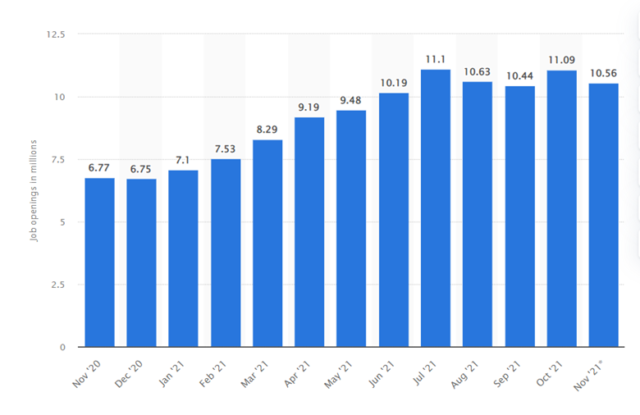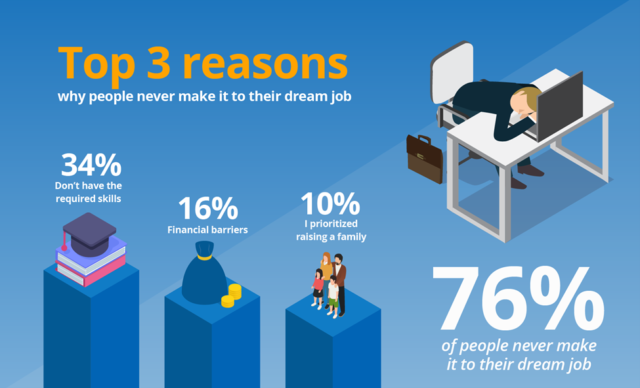HOW TO BEAT IT!
When the World Health Organization (WHO) declared the Novel Coronavirus Disease (COVID-19) outbreak as a pandemic in 2020, nobody anticipated the impact it would have on the workforce. To curb its spread, the whole world went into an unprecedented lockdown, with many countries restricting travel, and mandating a quarantine period after exposure. A move that marked the start of a new normal.
Additionally, schools and offices were temporarily closed. Corporate employees started working remotely, and thousands of other businesses permanently shut down according to a CNBC analysis in 2020. Millions of people were laid off as a result.
In another 2020 study by the U.S. Bureau of Labor, 56 percent of establishments (4.7 million) experienced a decrease in demand for their products or services while 19 percent (1.6 million) experienced a government-mandated closure. Some businesses were restricted to open only to certain hours of operation and thus, unable to generate enough revenue for newer opportunities.
Fast forward two years into the pandemic, the job market has taken a different trajectory. Unlike most employees who desperately held on to their jobs in 2020, many workers are resigning from their current roles.
This once emerging trend has now sparked a movement that experts call “the great resignation”. The Great Resignation, also known as the Big quit, is the economic trend in which employees voluntarily resign from their jobs in masses.
What the numbers tell us.
At a time when financial insecurity was supposed to be at its peak, people have been more willing to bet on themselves. A March 2021 survey by Microsoft of more than 30,000 global workers predicted more than 40% of workers were considering either quitting or changing their profession by the end of 2021. That is about 3% of the nonfarm workforce. It comes therefore as no surprise to see that trend last throughout the year 2021 as can be seen in the chart below.


A recent publication in November 2021 by the U.S. Bureau of Labor Statistics, shows that the number of Quits, layoffs, and other Separation rates reached an all-time high in November 2021 with 4.53 million total separations compared to November 2020 and 2019 of 3.5 million and 3.3 million respectively. This increase in separation is even more significant because of the number of job openings available, which as of November 2021, is at 10.56 Million.
Below is a chart from Statista showing the separations over the last 2 decades and another showing the number of job openings over the past year.


Monthly job openings in the United States from November 2020 to November 2021(in millions)


The Employee’s Perspective
Many employees have given different reasons for choosing to move on from their previous employers. While financial compensation was definitely a motivating factor, other elements seemed to be more important.
1. A Bitter Reward for Loyalty


The COVID-19 pandemic caused a complete or partial closure of different industries. This marked one of the highest layoffs in US history when 13 million people were laid off from their jobs in March 2020 according to the U.S. Bureau of Labor Statistics.
Some of the fortunate workers who kept their jobs took several pay cuts to accommodate for the company’s losses and reducing some payroll expenses by as much as 20 percent. This forced employees, who felt hard done by their employers, to calculate where their loyalties lie: should they stay loyal to employers who would toss them out at the earliest sign of distress, or be loyal to themselves and their families?
2. Remote Job Opportunities



While the Standard Operating Procedures (SOP) and lockdown measures forced some companies to go remote, there came a new realization for the job seekers: if they can work remotely during the pandemic, what is stopping them from getting a permanent remote role?
This is particularly true for Information Technology and Engineering companies that do not require a physical presence in the offices. Teams can seamlessly communicate via conference channels like Zoom, Microsoft Teams, GoToMeeting, etc., and work as efficiently as they would in an office environment.
Remote work has also been a saving grace for many minority employees who claim that working remotely keeps them away from office politics and passive-aggressive behaviors from toxic coworkers.
Most importantly, the pandemic made it difficult for working parents to get childcare help. Working remotely gives new parents with young kids the ability to take care of their kids.
Recent data from Glassdoor shows 460% increase in remote work searches since the start of the pandemic. This means, more people are continuously looking for remote opportunities, hence the massive resignation from onsite jobs.
3. Career Advancement and Personal Development


Very few people land a job in their dream profession. In fact, many people graduate in one field and pursue a professional career in a completely different industry. For example, we see engineers becoming salesmen, cooking enthusiasts taking corporate jobs, others taking side gigs to pay bills, and so forth.
The shutdowns and layoffs meant Job Seekers now had more time to upskill, which gave them the ability to switch careers either into their fields of choice, or more lucrative fields. With the high demand for labor and skills shortage, it meant job seekers could now get jobs in fields they love but had no experience in.
4. Burn Out


While some industries were going through historic lows with businesses scrambling to stay afloat, the healthcare sector boomed. When the cities went into strict lockdowns, hospitals, pharmacies, and labs remained open.
This posed multiple challenges to the healthcare industry:
- Ensuring a seamless supply of medication (particularly the one used for critical COVID-19 patients) across the globe despite the supply chain bottlenecks brought about by the pandemic.
- Finding solutions for overburdened hospitals with a shortage of nurses and doctors.
- Safety for healthcare workers such as doctors, nurses, and other staff working at the frontline.
- Assisting the government with vaccination drives.
- Debunking myths around Covid vaccines.
These challenges led to long working hours and mental exhaustion for a lot of workers. According to this Washington Post study, three in 10 healthcare workers are experiencing burnout and thinking of leaving the profession.
For a class of workers who are categorized as “Essential”, it is understandable why this is causing a lot of panic among healthcare providers.
How can Employers Leverage This Situation?
While the Great Resignation has proven to be a challenge to employers, it is also a great opportunity for organizations to reassess their current state, and create a pathway for a better crisis-proof organization.
To learn more about Crisis leadership and how to steer your organization forward against the odds, please read this article.
For employers, retaining their best employees has never been this challenging. For a lot of employees, it has never been easier to get a pay increase. An article by Fortune Magazine reports that some employers are raising employee pay by as much as 10%.
For other employees, however, it’s not just about the pay increase. While the increased pay is a motivating factor to some, others are looking for more flexibility, a better work culture, and career advancement. Some employees have reported being willing to take a pay cut to work remotely. This now puts the challenge on employers: those who can adapt will win the battle for talent.
Nonetheless, there are a few upsides of this ‘Great Resignation’ for some employers.
i. Go Remote



There has been a lot of pressure on employers to go remote. While working remotely definitely has its benefits, some employers still disapprove of remote work culture. Among some of the concerns is the fact that remote work makes it harder to communicate, manage expectations, and audit work. This challenge can be solved by adopting a technology-friendly culture. While not all jobs can be done remotely, a lot of our tasks can be completed by using technology platforms such as Zoom, Microsoft Teams, Goto Meeting, etc., to increase collaboration and engagement.
Other employers are expressing concerns over commercial real estate contracts for office spaces that will go unused without bodies filling the seats. In economic terms, these are considered sunk costs and employers should consider them as such. Would you rather have an empty office building but still retain your star employee whose output is actively contributing to your bottom line, or would you rather have them go work for your competitor and still incur the Real Estate costs?
Remote work could also help reduce future Real Estate costs and other office expenses. According to this article by Forbes, Employers could save up to $22,000 per full-Time Employee working remotely which in the long run could improve the bottom line.
ii. Go on the Offense


Not every employee who resigned got into a better position. In fact, most startup businesses during the pandemic were developed by some quitters while others are still in search.
Today, recruiters have a rare opportunity to attract and recruit top talents, regardless of the size of their company. The opportunity to work from anywhere used to be reserved only for the top brass of companies but is now available to all. Choosing a remote or hybrid strategy can make you very attractive to potential candidates. In fact, one strategy we have implemented to get top candidates for our clients is to stay up to date with companies that are enforcing a mandatory return to the office and luring away their employees who want to stay working remotely.
iii. Revamp Your Work Culture


Culture is not just about pay or benefits, or state-of-the-art buildings and technology. While those things are certainly helpful and contribute to a healthy working environment, culture is about how you do work. Are your employees treated like humans, and not cogs in a machine? Are they given room to experiment and fail, without fear of losing their job? Do you regularly get the pulse of your team and your organization on what is working and what is not? Does everyone have an equal platform to be heard, not just the loudest, highest-paid, or most likable? Are employees allowed to take time off to handle personal issues without feeling guilt or shame? This is what differentiates a healthy culture from a toxic one. While employees were forced to stay in such environments for fear of losing their livelihoods, the pandemic has empowered them to walk away from such environments, even at the expense of lower salaries.
Letting go of your best resources isn’t a pleasant experience. For instance, Information Technology Employees fear they might not be able to cater to leftover complex projects from exiting coworkers, or restaurants without experienced chefs and managers to sustain the business.
The great resignation provides an opportunity for employers to revamp their company culture. One such change could be by moving to a “promotion from within” policy. While this is not a one size fits all solution, it could improve employee morale, leading to increased employee engagement and performance.
Final Thoughts
Covid-19 challenged not just our perspective about life and our mortality, but it also changed our views on what was most important to us. Not only did the U.S. experience the highest separation rates in its recorded history, but many people also switched careers in search of safer work environments, better pay, work culture, and more flexibility.
It’s time for us to embrace the changes this new world brings, and continue to lead our organizations forward with rigor and excitement!
